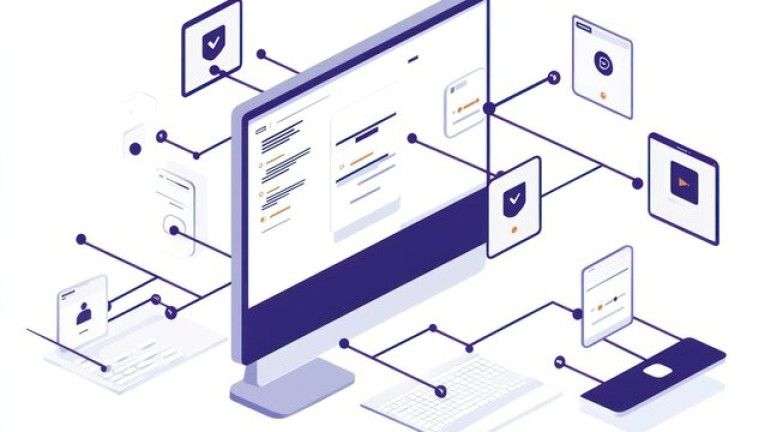In recent years, health information exchange (HIE) networks have become crucial for sharing medical data among healthcare providers. Traditional methods of sharing patient information rely heavily on centralized databases and networks, which often create issues of data security, access, and trust. Blockchain technology, however, offers a decentralized solution that can address many of these challenges, creating a more secure, transparent, and efficient health information exchange system.
Blockchain technology has gained significant attention for its potential to revolutionize various industries, including healthcare. By leveraging its distributed ledger system, blockchain can provide a foundation for building more robust, trustworthy, and patient-centric health information exchange networks. In this article, I will explore the benefits, challenges, and implications of using a blockchain-based approach to HIE networks, illustrating how it can transform the way patient data is shared and accessed.
Table of Contents
What is Blockchain?
At its core, blockchain is a decentralized and distributed digital ledger that records transactions in a secure and immutable manner. Each block in the chain contains a set of transactions, and once a block is added to the chain, it cannot be altered or deleted without the consensus of the network participants. This immutability and decentralization are what make blockchain so appealing for industries like healthcare, where data integrity, privacy, and security are of paramount importance.
Blockchain technology operates through a network of nodes, each holding a copy of the ledger. Transactions are validated through consensus mechanisms such as proof-of-work (PoW) or proof-of-stake (PoS), ensuring that all participants in the network agree on the state of the ledger before any changes are made. This decentralized structure eliminates the need for a central authority, reducing the risk of data breaches and unauthorized access.
Current Challenges in Health Information Exchange Networks
Before diving into the blockchain-based solution, it’s essential to understand the current issues with traditional health information exchange systems. Despite the advancement of electronic health records (EHRs) and health information systems, the healthcare industry continues to face several significant barriers to seamless data sharing.
Data Privacy and Security Concerns
One of the biggest challenges in health information exchange is ensuring that sensitive patient data is kept private and secure. Healthcare data is a prime target for cybercriminals due to its value on the black market. Traditional centralized systems, where data is stored in a single location, are vulnerable to hacks and data breaches. Even with encryption and other security measures, there is always a risk that data can be accessed or manipulated by unauthorized parties.
Lack of Interoperability
Healthcare providers often use different software systems, making it difficult for them to communicate and share information. Even though the use of electronic health records has become widespread, many EHR systems are not designed to work together. This lack of interoperability leads to inefficiencies, delays, and errors in patient care, as healthcare providers may not have access to complete or up-to-date information.
Trust and Data Integrity Issues
In a centralized health information exchange system, there is always the issue of trust. Patients must trust healthcare providers to manage their data securely, and providers must trust that the data they receive is accurate and complete. However, human error, system malfunctions, and even intentional data manipulation can compromise the integrity of patient records.
How Blockchain Can Solve These Challenges
Blockchain offers a promising solution to these challenges by providing a secure, transparent, and decentralized way to store and exchange health data. Let’s explore how blockchain can address the issues mentioned above.
Enhancing Data Privacy and Security
With blockchain, patient data is not stored in a single location but rather across a distributed network. This makes it much more difficult for hackers to target the system as they would need to breach multiple nodes simultaneously. Additionally, blockchain employs advanced encryption techniques to ensure that data remains secure. The use of public and private keys ensures that only authorized parties can access sensitive information.
One key feature of blockchain that enhances security is its immutability. Once a transaction (or data entry) is recorded on the blockchain, it cannot be altered or deleted without the consensus of the network participants. This makes it nearly impossible for anyone to tamper with patient data without being detected, which significantly reduces the risk of data manipulation.
Improving Interoperability
One of the strengths of blockchain is its ability to enable interoperability between different healthcare systems. Because blockchain is a decentralized system, it allows various stakeholders in the healthcare ecosystem—such as hospitals, clinics, insurance companies, and patients—to access the same data in real time. Blockchain’s open-source nature means that different healthcare systems can connect to the network and access patient data without needing to worry about compatibility issues between different software systems.
Smart contracts, which are self-executing contracts with the terms of the agreement directly written into code, can further enhance interoperability. Smart contracts can automate processes, such as verifying patient identity or triggering the release of medical records, ensuring that data is shared in a consistent and efficient manner.
Building Trust and Ensuring Data Integrity
Blockchain’s transparent and immutable ledger instills trust among all parties involved in the health information exchange. Patients can track who has accessed their data, when it was accessed, and what changes were made. This level of transparency ensures that patients have control over their data, which can help build trust in the system.
Furthermore, blockchain’s consensus mechanisms ensure that only validated and verified data is added to the ledger. This reduces the risk of errors and fraud, as every transaction must be approved by the network participants before it can be recorded. The result is a system that ensures data integrity and reduces the likelihood of incorrect or manipulated information being used in patient care.
Real-World Examples of Blockchain in Healthcare
Several healthcare organizations and startups are already experimenting with blockchain technology to improve health information exchange networks. Here are some real-world examples:
1. Medicalchain
Medicalchain is a blockchain-based platform that allows patients to store their health records in a secure and accessible way. Using blockchain, Medicalchain creates a transparent, immutable ledger of patient data that can be shared with healthcare providers in real time. The platform also allows patients to grant or revoke access to their medical records, putting them in control of their data.
2. Solve.Care
Solve.Care is another blockchain-based platform designed to streamline healthcare administration. The platform uses blockchain to manage care coordination, patient scheduling, and billing. By creating a transparent and decentralized system, Solve.Care reduces administrative burdens, improves data accuracy, and enhances communication between patients and healthcare providers.
3. Healthereum
Healthereum is a blockchain-based project that rewards patients for participating in their healthcare. Through the use of tokens, Healthereum incentivizes patients to engage in healthy behaviors, attend appointments, and provide feedback on their care. Blockchain ensures that all data is securely stored and that patients have control over their personal information.
Potential Benefits of Blockchain-Based Health Information Exchange
A blockchain-based health information exchange network can offer several benefits, including:
- Enhanced Data Security: Blockchain’s decentralized nature and encryption techniques ensure that patient data is secure and resistant to hacks or unauthorized access.
- Improved Data Integrity: Blockchain’s immutability and consensus mechanisms guarantee that only accurate and validated data is stored on the ledger, reducing the risk of errors or fraud.
- Better Interoperability: Blockchain enables seamless data sharing between different healthcare systems, eliminating compatibility issues and improving the overall efficiency of the healthcare system.
- Greater Patient Control: Blockchain gives patients control over their data, allowing them to grant or revoke access as needed.
- Cost Reduction: By reducing the need for intermediaries and streamlining administrative processes, blockchain can help reduce the costs associated with healthcare data management.
Challenges and Considerations
While the potential benefits of blockchain in health information exchange are significant, there are also challenges to consider.
1. Regulatory Compliance
Healthcare is a highly regulated industry, and any blockchain-based health information exchange system must comply with various laws and regulations, such as the Health Insurance Portability and Accountability Act (HIPAA) in the United States. Ensuring that blockchain solutions meet these regulatory requirements will be a crucial factor in their widespread adoption.
2. Scalability
Blockchain networks, particularly those that use proof-of-work consensus mechanisms, can struggle with scalability. As more participants join the network and the volume of transactions increases, the system may experience slowdowns or higher transaction costs. Finding ways to scale blockchain technology while maintaining its security and decentralization will be a key challenge.
3. Integration with Existing Systems
Integrating blockchain technology with existing healthcare infrastructure can be complex. Healthcare providers may be reluctant to adopt new technologies, particularly if they require significant changes to their current systems. Ensuring that blockchain solutions can be easily integrated into existing workflows will be essential for their success.
Conclusion
Blockchain technology has the potential to transform health information exchange networks by addressing the current challenges of data security, interoperability, and trust. By creating a decentralized and transparent system, blockchain can ensure that patient data is secure, accurate, and accessible to the right people at the right time. While there are still challenges to overcome, the benefits of a blockchain-based approach to health information exchange are clear, and the technology holds great promise for improving the efficiency and quality of healthcare delivery. As the healthcare industry continues to embrace innovation, blockchain could play a crucial role in shaping the future of health information exchange.





